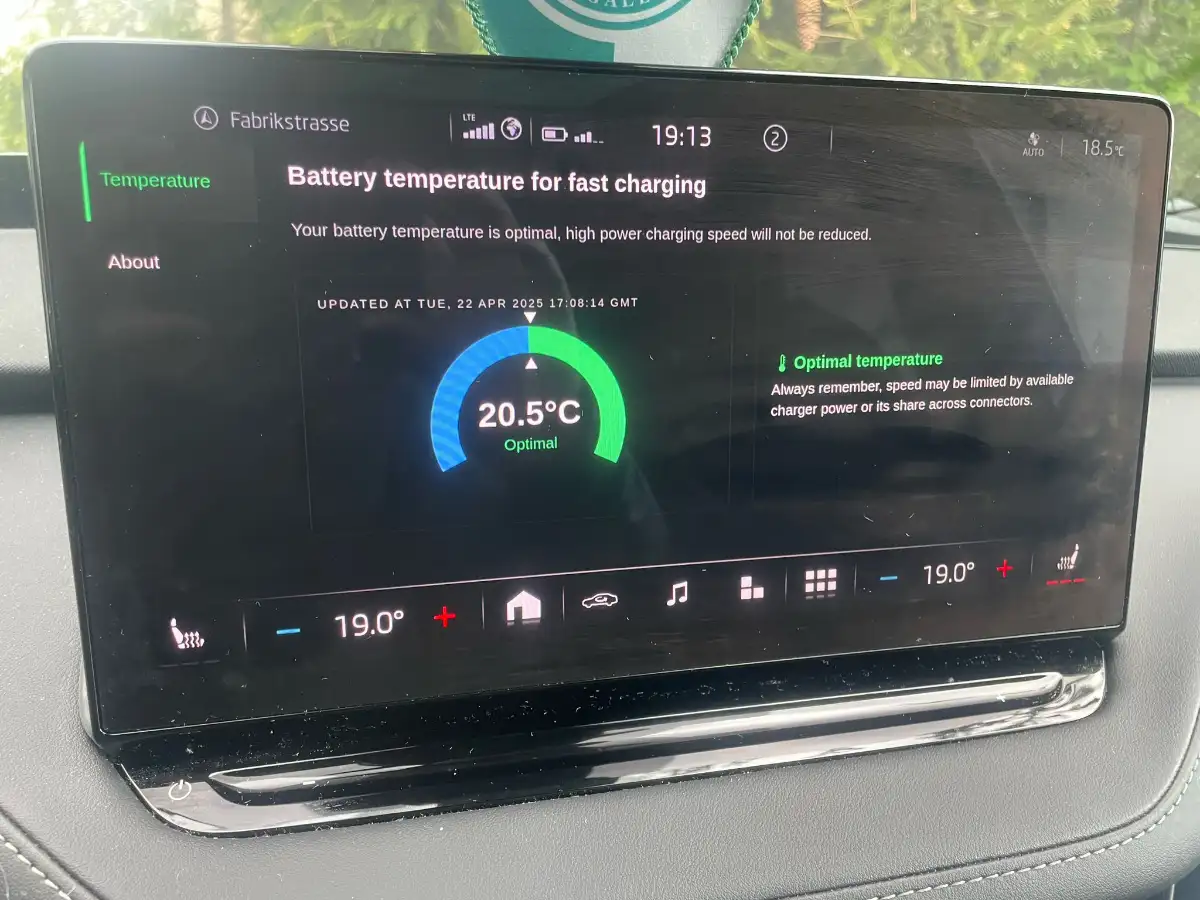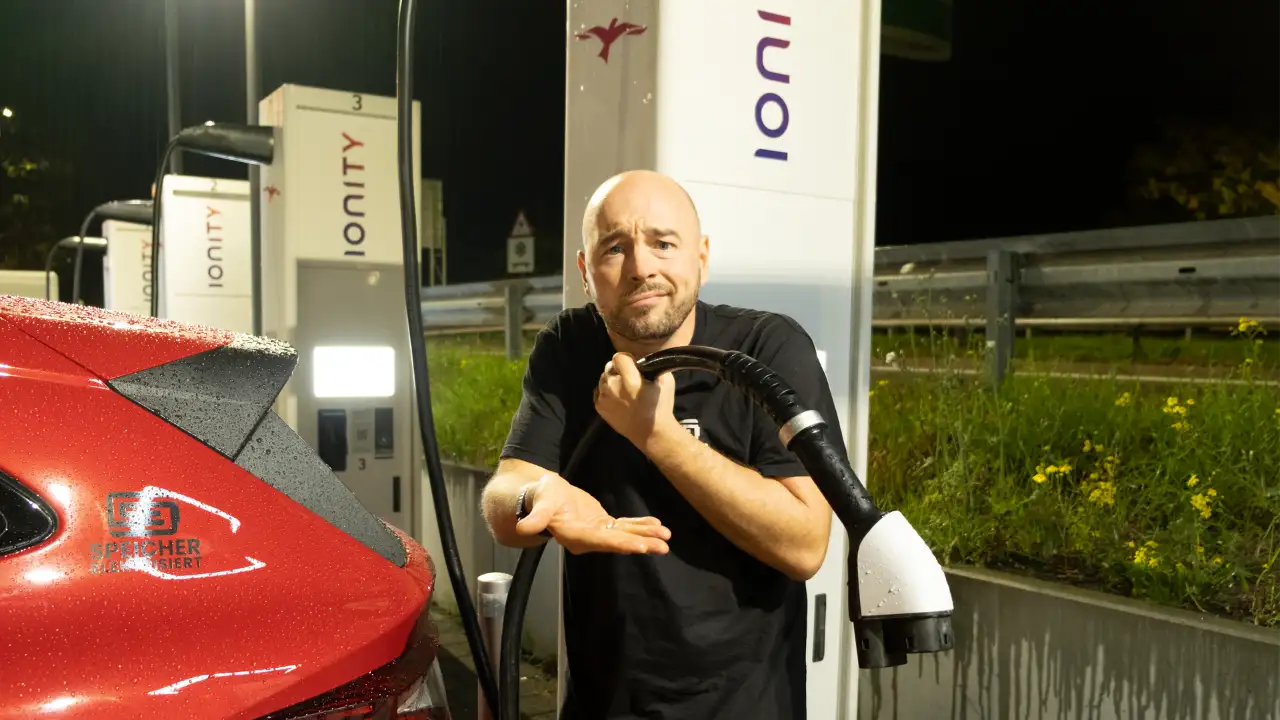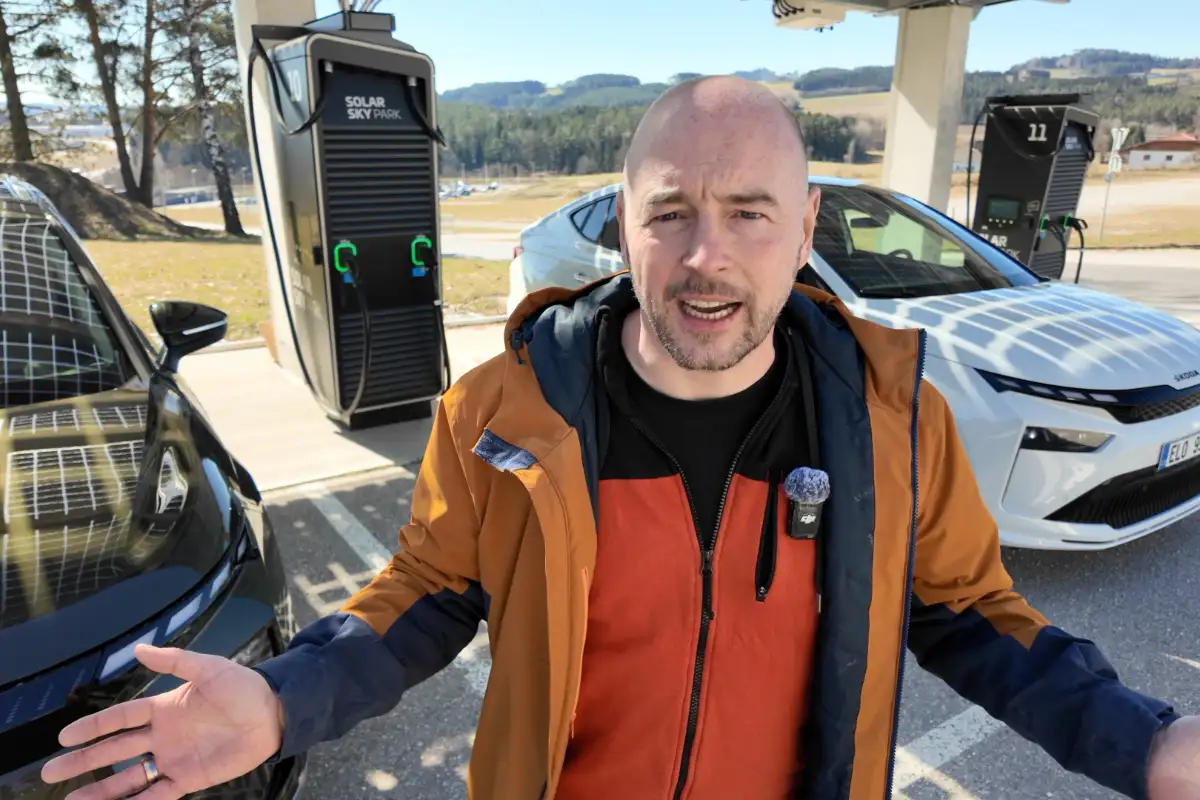Electric vehicles are considered low-maintenance – but how do they hold up after nearly 300,000 km in demanding taxi service?
We tested a Škoda ENYAQ iV 80 that has been in continuous use for over two and a half years.
Taxi operator Felix gives us an honest look into his electrified fleet, which includes several Škoda ENYAQ models, multiple Tesla Model Ys, and traditional diesel taxis.
Update February 2025: The ENYAQ in question has now reached 320,000 km and is still in daily use. It just passed its technical inspection without any issues.
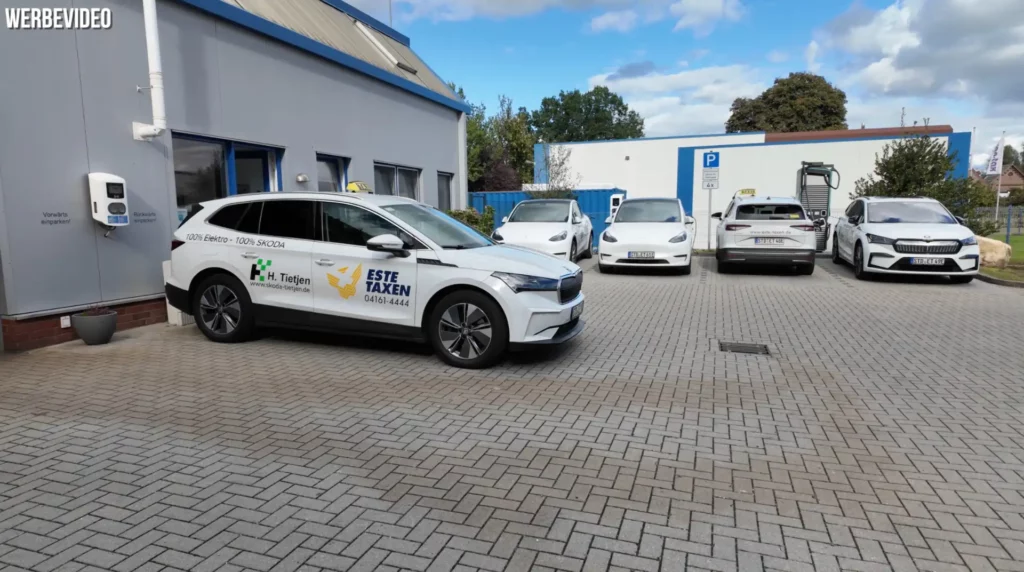
Felix has been operating multiple ENYAQ iV 80s as taxis since 2022. His oldest unit has already clocked 280,000 km and continues to operate reliably
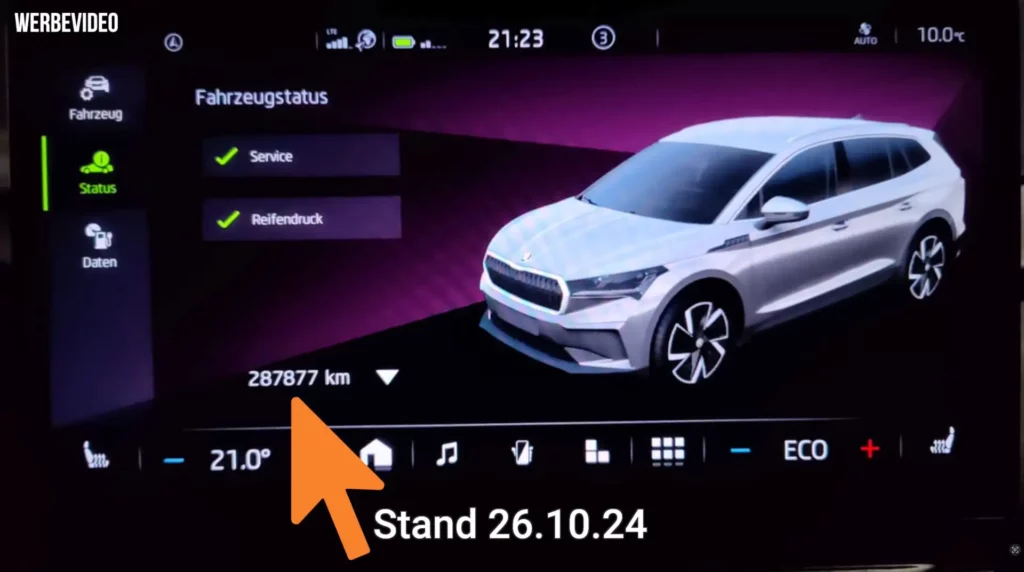
Typical Wear and Tear at High Mileage?
- Minimal issues with wear parts
- Interior still in surprisingly good shape despite daily use
- Battery performance remains acceptable, even with frequent DC fast charging
Interior and Build Quality After 280,000 km
After nearly three years of intensive taxi use, the ENYAQ’s interior shows very little visible wear. Door panels, seats, and materials are well preserved.
No rattling or squeaking from panels or the dashboard. Even the original floor mats are still in use.
The driver’s seat is somewhat worn – as expected for any vehicle after this kind of mileage – but still functional.
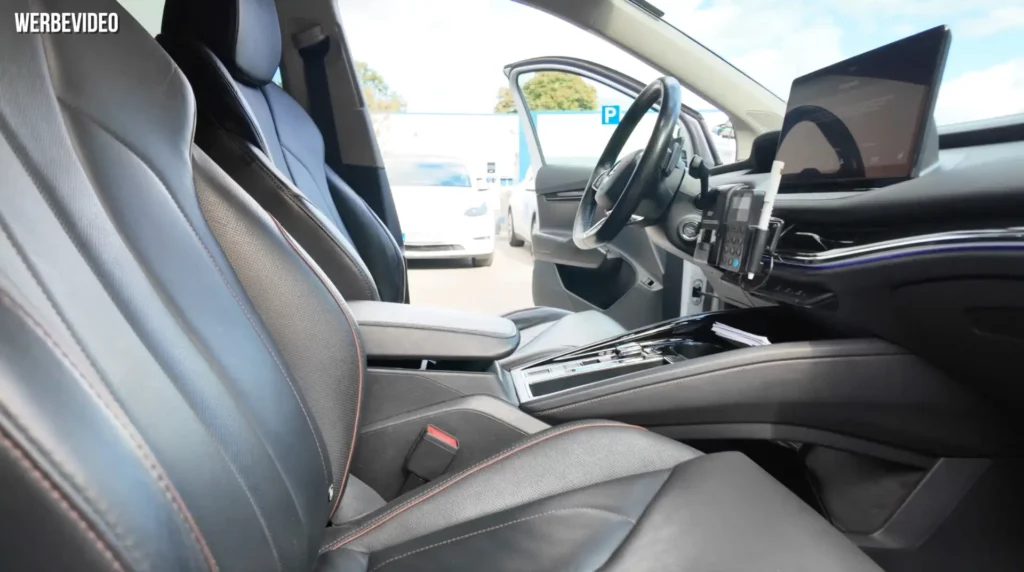
Wear Parts: Remarkably Durable
- Factory brake pads and discs still in use after 280,000 km
- Stabilizer links replaced at around 70,000 km
- Front shocks slightly leaking at 140,000–150,000 km
- Rear axle still completely original
Battery Health After 280,000 km
Battery longevity is a key topic for EVs. In this case, things get especially interesting:
This ENYAQ was almost exclusively charged via DC fast charging – and usually to 100 percent.
That kind of use places significant stress on the battery and is rarely replicated by private users.
A privately owned ENYAQ, charged mostly on AC and usually kept below 90–95 percent, would likely show much lower degradation.
Felix commissioned a battery certificate from Aviloo:
- State of Health (SOH): 77%
- Usable capacity: 53 kWh
- Estimated range at 100%: 340–350 km
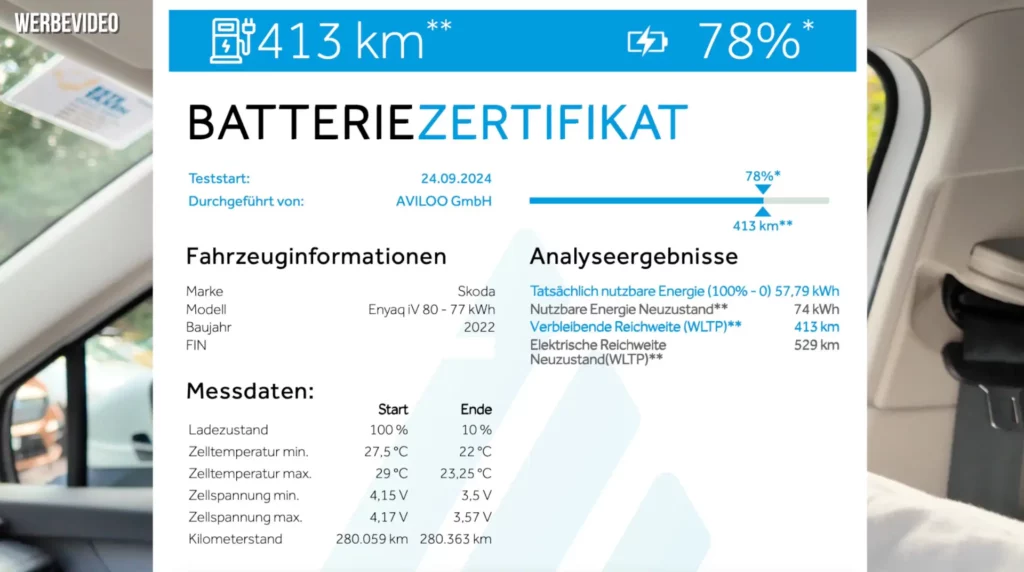
ENYAQ vs. Tesla Model Y – Which Makes the Better Electric Taxi?
Felix’s fleet includes not only Škoda models but also three Tesla Model Y units – a perfect side-by-side comparison.
While Tesla is often seen as the industry leader in EVs, this real-world test suggests that a well-built MEB-based car like the ENYAQ can be more robust and cheaper to maintain in everyday use.
Passenger Feedback
- Many passengers actually prefer the ENYAQ
- Notes like “Electric, but not a Tesla” appear in customer profiles
- Reasons: Comfort, easier access, and a more traditional vehicle feel
Servicing and Maintenance: Clear Advantage for Škoda
One surprise: All three Tesla Model Ys failed their first technical inspection.
Common issue: suspension problems, often expensive to fix.
Meanwhile:
- All ENYAQs passed every inspection
- Workshop costs for Škoda were significantly lower
Why Not Just Use Diesel with HVO100?
Some might suggest modern diesel vehicles running on HVO100 (renewable diesel) could be a good alternative. Felix explains why he’s gone fully electric:
- Lower maintenance costs than diesel
- Higher energy efficiency – equivalent to 1.6–1.7 litres of diesel per 100 km
- Cheaper cost per kilometre
- Massively lower CO₂ emissions
Felix estimates that since introducing EVs to his fleet, he’s already saved over 150 tonnes of CO₂.
While HVO100 is an option, biofuel resources are limited.
For him, switching entirely to electric is the only long-term sustainable so


